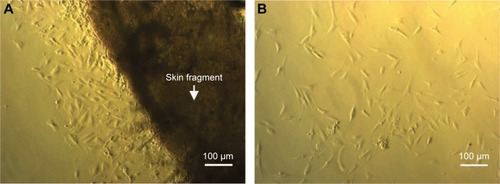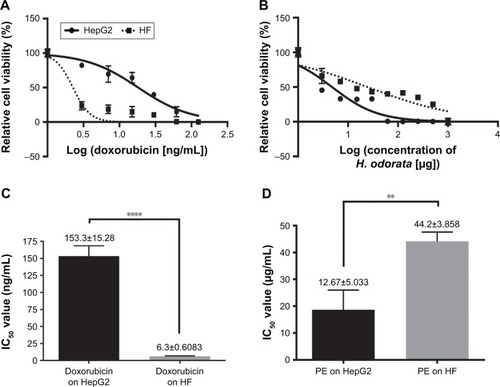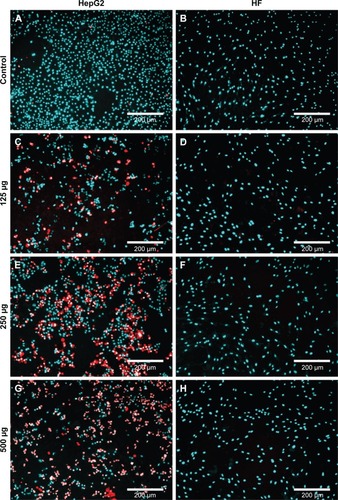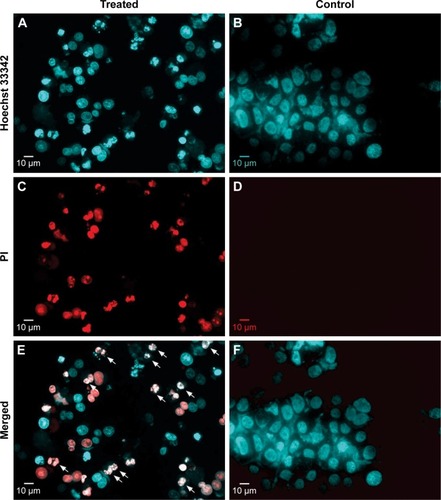Figures & data
Figure 1 Isolation of fibroblasts from skin tissue.

Figure 2 Cytotoxicity of doxorubicin and H. odorata PE on HepG2 and HF.
Abbreviations: HF, human fibroblast; H. odorata, Hopea odorata; PE, plant extract; SEM, standard error of the mean.

Figure 3 Fluorescence of HepG2 and HF cells after 48 hours of H. odorata treatment.
Abbreviations: DAPI, 4′,6-diamidino-2-phenylindole; HF, human fibroblast; H. odorata, Hopea odorata; PE, plant extract; PI, propidium iodide.

Figure 4 Flow cytometry analysis of treated HepG2 cells.
Abbreviations: H. odorata, Hopea odorata; PE, plant extract; PI, propidium iodide.

Figure 5 The activation of caspase-3/7 in HepG2.
Abbreviation: H. odorata, Hopea odorata.

Figure 6 Disintegrated nuclei of H. odorata extract-treated cells.
Abbreviations: H. odorata, Hopea odorata; PI, propidium iodide.

